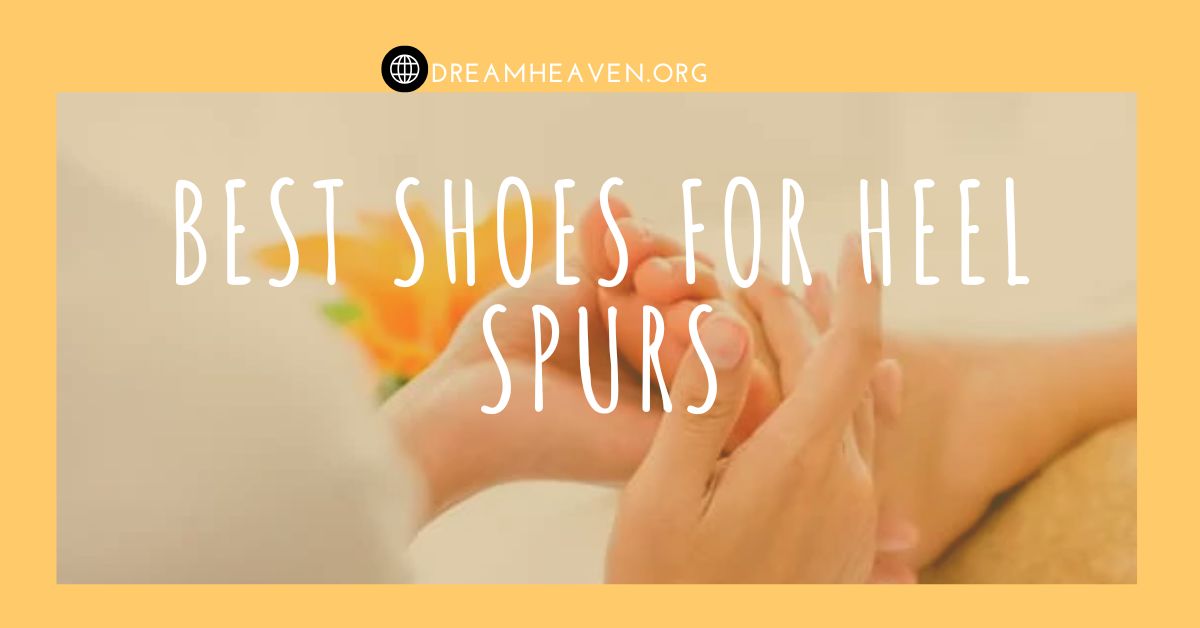Heel spurs are bony growths on the underside of the heel that can cause significant pain and discomfort. Wearing the wrong shoes can exacerbate this condition, but the right footwear can provide relief, support, and comfort. This guide explores the best shoes for heel spurs, what features to look for, and why they make a difference.
Understanding Heel Spurs
Heel spurs often develop due to repetitive stress on the heel bone, ligaments, and tendons. They are commonly associated with plantar fasciitis, a condition causing inflammation of the tissue connecting the heel bone to the toes. Proper footwear helps reduce stress and alleviate pain caused by heel spurs.
What to Look for in Shoes for Heel Spurs
Excellent Arch Support
Good arch support helps distribute weight evenly across the foot, reducing pressure on the heel.
Cushioned Insoles
Soft, padded insoles provide shock absorption, which minimizes impact and pain during walking or running.
Deep Heel Cups
Heel cups stabilize the heel and offer additional cushioning, reducing strain on the heel spur.
Shock-Absorbing Soles
Shoes with rubber or EVA soles absorb shock, easing pressure on the heel during movement.
Lightweight and Flexible Design
A lightweight, flexible shoe reduces unnecessary stress on your feet, promoting better mobility.
Wide Toe Box
A roomy toe box prevents crowding of the toes, allowing for better comfort and reducing foot fatigue.
Top Shoe Recommendations for Heel Spurs
Brooks Addiction Walker
Why it’s great: Known for excellent arch support and a cushioned midsole, this shoe offers comfort for those with heel spurs.
Best for: Everyday walking and casual wear.
Asics Gel-Nimbus Series
Why it’s great: Features gel cushioning in the heel area for maximum shock absorption and comfort.
Best for: Running and athletic activities.
New Balance 990v5
Why it’s great: Combines superior stability with a plush cushioned sole, making it perfect for reducing heel pressure.
Best for: Walking and light jogging.
Hoka One One Bondi
Why it’s great: Offers a thick, cushioned sole with excellent shock absorption, minimizing heel pain.
Best for: Long walks and extended standing periods.
Vionic Walker Classic
Why it’s great: Designed with orthotic-grade arch support and a cushioned heel, this shoe provides both comfort and stability.
Best for: Walking and all-day wear.
Saucony Grid Omni Walker
Why it’s great: Comes with a padded sole and excellent support, making it a popular choice for heel spur relief.
Best for: Low-impact activities and daily errands.
Orthofeet Coral Sneakers
Why it’s great: Specifically designed for foot conditions, these sneakers have a wide toe box, cushioned insoles, and deep heel cups.
Best for: Comfort-focused activities and prolonged use.
Clarks Wave Grip Sandals
Why it’s great: Offers arch support and cushioned insoles in a sandal design, perfect for summer.
Best for: Casual outings and warm weather.
Benefits of Wearing the Right Shoes for Heel Spurs
Pain Reduction: Alleviates pressure on the heel, reducing inflammation and pain.
Improved Mobility: Supports natural foot movement, allowing you to walk or run with ease.
Better Posture: Promotes proper alignment of the feet, knees, and back, enhancing posture.
Long-Term Relief: Prevents further damage to the heel and promotes healing over time.
Tips for Choosing the Right Shoes
Consult a Podiatrist: Get professional advice on the best footwear for your specific condition.
Test for Comfort: Always try on shoes to ensure they fit well and feel comfortable.
Consider Custom Insoles: Orthotic insoles can provide tailored support for additional comfort.
Avoid High Heels: High-heeled shoes increase strain on the heel and should be avoided.
Replace Worn Shoes: Worn-out shoes lose their supportive features and may worsen your condition.
Additional Remedies for Heel Spurs
Orthotic Inserts: Add customized insoles to your favorite shoes for better support.
Stretching Exercises: Perform regular stretches to relieve tension in the plantar fascia.
Cold Therapy: Apply ice packs to reduce inflammation and soothe pain.
Weight Management: Maintaining a healthy weight reduces pressure on the heel.
Conclusion
Finding the right shoes for heel spurs can make a world of difference in managing pain and improving daily comfort. Shoes with excellent arch support, cushioned insoles, and shock-absorbing soles are key to alleviating discomfort. Whether you’re walking, running, or simply going about your day, the right footwear will provide the support you need to stay active and pain-free.
FAQs
1. Can I use regular shoes for heel spurs?
Regular shoes may lack the necessary support and cushioning. Opt for specialized or supportive footwear designed for heel pain relief.
2. Are orthotics necessary for heel spurs?
Orthotics are not mandatory but can significantly enhance comfort and support, especially in non-specialized shoes.
3. How often should I replace my shoes for heel spurs?
Replace shoes every 6-12 months or as soon as they show signs of wear, as worn shoes lose their supportive qualities.
4. Can barefoot walking help heel spurs?
Barefoot walking may worsen the condition, especially on hard surfaces. Stick to supportive footwear.
5. Are running shoes good for heel spurs?
Yes, many running shoes are designed with excellent cushioning and support, making them suitable for heel spur relief.

